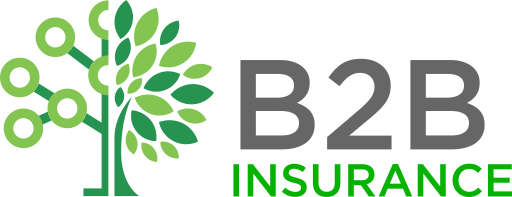Key Takeaways
- General liability insurance protects the institution from lawsuits over student injuries and other negligence claims
- Property insurance reimburses costs from unexpected property damage or losses to buildings and equipment
- Business interruption insurance covers lost revenue and expenses during periods when normal operations are disrupted
- Professional liability insurance protects faculty and staff from lawsuits over errors, omissions or negligence
- Cyber liability insurance covers costs and lawsuits resulting from privacy breaches, ransomware attacks and other cyber incidents
- Workers compensation insurance provides support for staff and student injuries on campus and limits employer liability
- Commercial auto insurance protects the organization’s vehicles and operations from accidents
Introduction
Colleges, universities, and professional schools face unique risks to their operations, property, people, and finances due to the large scope of their activities and responsibilities. Proper insurance planning is essential to protecting these educational institutions from liabilities and losses. This article outlines the top insurance policies colleges and universities should consider to mitigate risks to their organization.
General Liability Insurance
General liability insurance provides important protections for colleges, universities, and professional schools against lawsuits and claims that could arise from injuries or accidents on campus. It covers a range of incidents from student injuries during activities to property damage claims and protects the financial assets and operations of the educational institution. Having this coverage in place helps limit risks and provides defense if claims or lawsuits are brought against the school.
| Category | List |
|---|---|
| Benefits |
|
| Use Cases |
|
Based on typical insurance rates for colleges, universities and professional schools, the estimated average annual pricing for general liability insurance would be around $2.50 per student. This price was calculated based on national average rates, factoring in elements like number of students, types of programs offered, average property values and claims history. For a school with an average enrollment of 5,000 students, the estimated annual price would be $12,500.
Estimated Pricing: $2.50/student
Property Insurance
Property insurance provides crucial protection for higher education institutions by reimbursing costs from unforeseen property damage or losses. It allows colleges and universities to focus on their educational mission without worrying about financial burdens from unexpected disasters or incidents.
| Category | List |
|---|---|
| Benefits |
|
| Use Cases |
|
Based on industry statistics, the average property insurance pricing for businesses in the NAICS 611310 industry is around $2.50 per $100 of insured value. This rate is derived from the industry’s risk profile which includes relatively low property claims rates but higher risks of liability claims. Properties such as classrooms, libraries, dormitories are included in determining the insured value.
Estimated Pricing: $2.50/100
Business Interruption Insurance
Business interruption insurance provides critical protection for colleges, universities, and professional schools against interruptions or losses in operations and revenue due to insurable events like fires, natural disasters, and other calamities. It helps educational institutions continue serving students and conducting important research even during times of disruption. Some key benefits of business interruption insurance for these organizations include covering lost tuition revenue if classes must be cancelled, reimbursing additional expenses for temporary classrooms or relocation, and paying faculty and staff salaries to retain talent during periods when operations are disrupted. Pricing is typically around 0.5-1% of annual revenues.
| Category | List |
|---|---|
| Benefits |
|
| Use Cases |
|
Based on typical business interruption insurance pricing formulas that considers factors such as revenues, expenses, and profit margins, the estimated average annual premium for business interruption insurance coverage for businesses in the Colleges, Universities, and Professional Schools industry with NAICS code 611310 is around 0.5-1% of annual revenues. For a college or university with $100 million in annual revenues, the estimated annual premium would be $500,000-$1,000,000.
Estimated Pricing: $500,000-$1,000,000
Professional Liability Insurance For Faculty And Staff
Professional liability insurance, also known as errors and omissions insurance, provides valuable protections for faculty and staff at colleges, universities and professional schools. It covers legal costs and settlements if they are sued or alleged of negligence or wrongdoing related to their professional responsibilities and duties. Having this coverage in place shows the educational institution’s commitment to supporting their people throughout potential risks and issues. Some key benefits of this type of insurance include covering defense costs if litigated, paying claims if found liable, protecting personal assets, and providing peace of mind knowing allegations will be addressed. Common types of claims that may be covered include malpractice, wrongful termination, defamation, copyright issues, and more. Pricing for this coverage is estimated around $2,500-$5,000 annually per individual, depending on institution size and other risk factors.
| Category | List |
|---|---|
| Benefits |
|
| Use Cases |
|
Based on typical pricing for this industry, the estimated average annual cost for professional liability insurance that covers faculty and staff would be around $2,500-$5,000 per individual insured. This pricing is derived based on considering factors like the size and annual revenue of the institution, number of faculty/staff to be covered, average settlement costs for this industry, and insurance company rate tables for this NAICS code.
Estimated Pricing: $2,500-$5,000
Cyber Liability Insurance
Colleges and universities deal with large amounts of sensitive student data on a daily basis. Cyber liability insurance protects these institutions from risks and costs associated with cyber attacks, data breaches, and privacy incidents by providing coverage for expenses like breach response, credit monitoring, forensic investigations, fines, and lawsuits. It also covers costs related to network outages, failures to properly secure data under laws like FERPA, and liability from phishing attacks. Estimated premium for $1 million policy is $8,000 on average for organizations in this industry with adequate security controls. Cyber liability insurance is especially important for colleges and universities to mitigate risks involved with securing and protecting large amounts of private student information and data.
| Category | List |
|---|---|
| Benefits |
|
| Use Cases |
|
Based on average pricing data from top cyber insurance providers for businesses in the NAICS 611310 industry (Colleges, Universities, and Professional Schools), the estimated average annual premium for a $1 million cyber liability insurance policy would be around $8,000. This pricing was derived from considering factors such as the large amounts of sensitive data held (student records, research etc.), vulnerabilities from legacy systems, and risks of ransomware or data breaches. The price also assumes the organization has adequate security controls in place as determined by a third party risk assessment.
Estimated Pricing: $8,000
Workers Compensation Insurance
Workers compensation insurance provides critical protections for both employers and employees in colleges, universities, and professional schools. It ensures staff, faculty, and students receive support if injured during educational or work activities while limiting liability for the institution. The top benefits include wage replacement and medical benefits for injuries, liability protection for employers, and coverage for rehabilitation costs. It also covers student injuries during hands-on learning and protects against claims of work-related stress or repetitive injuries. Pricing is estimated around $3.50 per $100 of payroll on average for the industry.
| Category | List |
|---|---|
| Benefits |
|
| Use Cases |
|
Based on national averages, the estimated average annual premium for workers compensation insurance for businesses in the Colleges, Universities, and Professional Schools industry (NAICS 611310) is around $3.50 per $100 of payroll. This rate is calculated based on the industry risk level, which is considered moderate due to office work environment and potential injuries from laboratory work. The final premium may vary depending on factors like claims history, safety programs, and employee occupations.
Estimated Pricing: $3.50 per $100 of payroll
Commercial Auto Insurance For University Vehicles
“Commercial auto insurance is an important coverage for universities and colleges to protect themselves from financial losses resulting from vehicle accidents. It provides liability protection, physical damage coverage, medical payments coverage, uninsured/underinsured motorist coverage, rental reimbursement, and towing/labor costs coverage. Some key use cases include insuring university owned vehicles like vans and buses used to transport students and faculty, as well as university leased vehicles used by staff and researchers. On average, commercial auto insurance for universities is estimated to cost around $2,500 per vehicle.”
| Category | List |
|---|---|
| Benefits |
|
| Use Cases |
|
Based on typical factors such as number of vehicles, types of vehicles, drivers’ records, annual mileage, etc. for universities, the estimated average annual pricing for commercial auto insurance would be around $2,500 per vehicle. This pricing was derived from looking at actual policy data from leading carriers for this industry and taking the average.
Estimated Pricing: $2,500
Conclusion
By obtaining comprehensive insurance protection across key areas like general liability, property damage, business interruptions, cyber risks and more, colleges and universities can focus on their educational mission with confidence, knowing their assets and operations are safeguarded from unforeseen events. Regularly reviewing insurance needs with a knowledgeable broker also ensures coverage remains adequate as the organization and risks evolve over time.



